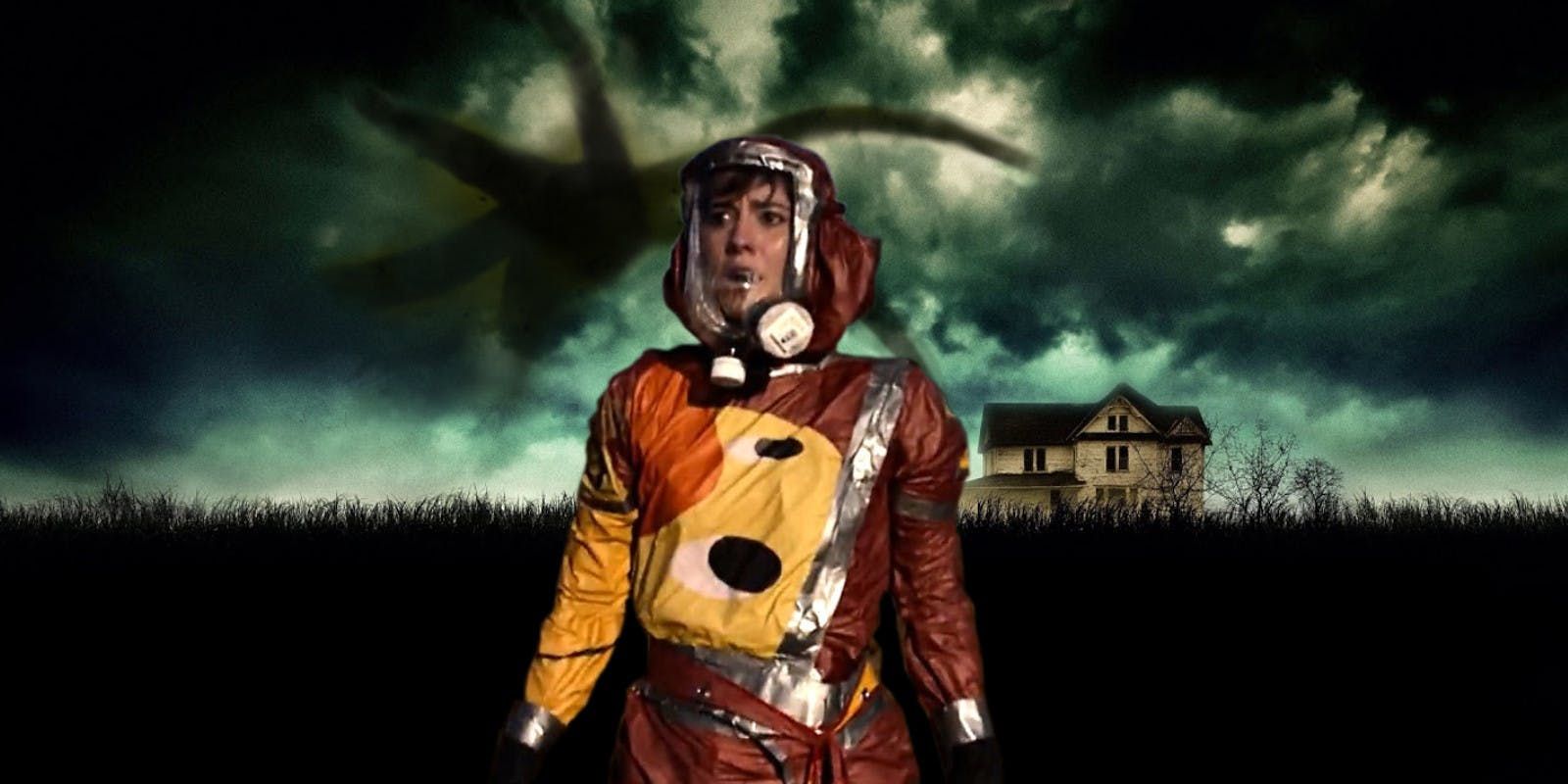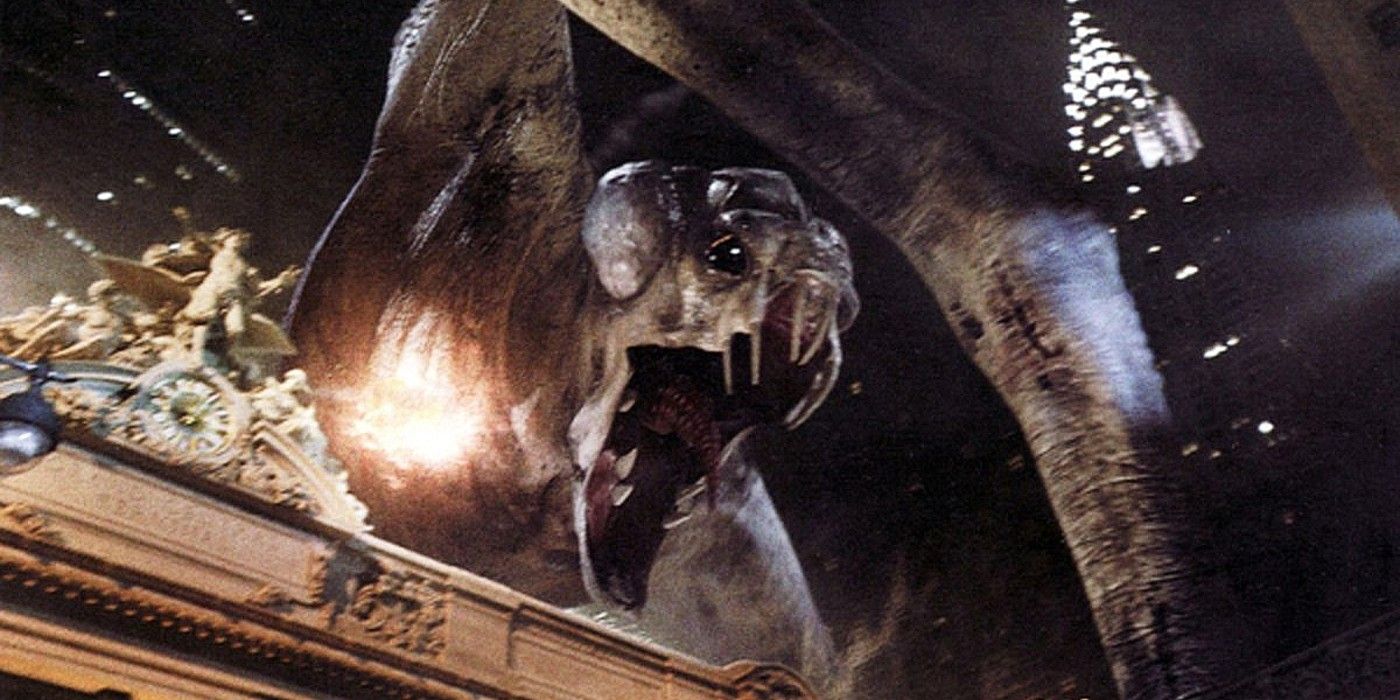
In his directorial debut, Dan Trachtenberg released 10 Cloverfield Lane in 2016 as a follow-up film to J.J. Abrams 2008 found footage horror flick Cloverfield. While they both feature monsters of unknown origins, fans of Trachtenberg’s movie have theorized that the monsters are toxic to humans regardless of where they came from.
Starring Mary Elizabeth Winstead as Michelle and John Goodman as Howard Stambler, 10 Cloverfield Lane follows the aftermath of a bizarre vehicular accident involving Michelle. When she wakes up, Michelle finds herself locked in an underground room, held captive by Howard; he claims his intentions are to keep her safe from the toxicity of the outside air. Howard goes on to explain there was a massive nuclear fallout that has since left the world dangerous for humans; the air is irradiated, so they must take special precautions. He claims to personally have witnessed several people die in the outside world and, as a result, built the bunker that he, Michelle, and Emmett DeWitt (John Gallagher Jr.) reside in for safety.
While 10 Cloverfield Lane is supposedly detached from the original film, it is presumed to take place within the overarching Cloverfield universe due to both its name and monster. Furthermore, when the third installment in the Cloverfield universe released in 2018, The Cloverfield Paradox, it solidified that these universes may intersect, run parallel, and stand alone from one another. Regardless of whether they are separate or together, they all have one thing in common: the monsters that one theory suggests are toxic to humans.

The Cloverfield fan theory is rooted in the fact that Howard asserts that Michelle and Emmett cannot leave the bunker, as well as his fictitious stories regarding what happened. As the film progresses, Michelle discovers that he has lied about nearly everything, but she is still uncertain of the possibility of the toxicity of the air. The film culminates in her escape, and the audience witnesses her take a hazmat suit on and off several times without any physical harm coming to her. The theory is influenced by the green gas emitted from an unknown spacecraft that flies above Michelle’s head, but the ship hasn't been directly connected to the monsters within the universe, nor does it allude to such a connection.
10 Cloverfield Lane does not feature monsters that are toxic to humans. Instead, it features the toxic gases and warfare used against the monsters that are poisonous to people. In short, the government’s handling of the Cloverfield monster and situation utilized atmospheric warfare which can kill people if they come in contact with it. This explains the deaths Howard supposedly witnessed. If it were the physical creatures in Cloverfield that were toxic to humans, anything that they touch would likely turn poisonous or immediately decay. Therefore, Michelle would have died when she was face to face with the monster, but she does not.
Ultimately, the theory that the monsters of the Cloverfield franchise are toxic is entirely false. Being that the fan theory focuses primarily on 10 Cloverfield Lane, it is important to note that the original Cloverfield movie never alluded to the physical presence of the monsters as being toxic towards humans. Instead, it proposed that the creatures could be poisonous if they attacked people, not just by simply existing. 10 Cloverfield Lane is just the second film in the current trilogy, and while fans have been eagerly awaiting a fourth installment, it seems unlikely that Cloverfield 4 will ever happen.
from ScreenRant - Feed https://ift.tt/31ccsnI



0 Comments